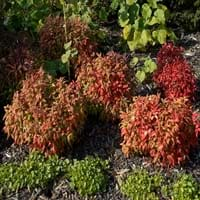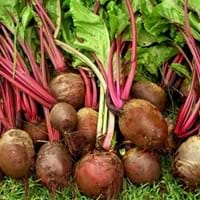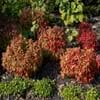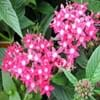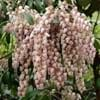Life Span
Perennial
Biennial
Type
Broadleaf Evergreen
Vegetable
Origin
China, Japan
Europe
Types
Heavenly Bamboo, Nandina 'Colerno'
Dwarf Nandina 'Compacta'
Dwarf Nandina 'Filamentosa'
Heavenly Bamboo, Nandina 'Harbor Belle'
Heavenly Bamboo, Nandina 'Moon Bay'
Detroit Dark Red Beet, Early Wonder Tall Beet
Habitat
low mountains, Mountain tops, Mountains, Valley
Not Available, Unknown
USDA Hardiness Zone
6-11
6-10
AHS Heat Zone
Not Available
12-1
Sunset Zone
21,22
A1, A2, A3, H1, H2, 1a, 1b, 2a, 2b, 3a, 3b, 4, 5, 6, 7, 8, 9, 10, 11, 12, 13, 14, 15, 16, 17, 18, 19, 20, 21, 22, 23, 24
Habit
Clump-Forming
Clump-Forming
Flower Color
Not Available
Red, Green
Flower Color Modifier
Bicolor
Not Available
Fruit Color
Not Available
Not Available, Tan
Leaf Color in Spring
Green, Purple, Copper
White, Yellow, Red, Green, Orange, Dark Green
Leaf Color in Summer
Green, Purple
White, Yellow, Red, Green, Orange, Dark Green
Leaf Color in Fall
Green, Purple
White, Yellow, Red, Green, Orange, Dark Green
Leaf Color in Winter
Red, Green, Purple
Not Available
Leaf Shape
Acuminate
Spinach Type
Plant Season
Spring, Summer, Fall, Winter
Spring, Summer, Fall
Sunlight
Full Sun, Partial Sun, Partial shade, Full Shade
Full Sun
Growth Rate
Medium
Very Fast
Type of Soil
Loam, Sand
Loam, Sand
The pH of Soil
Acidic, Neutral, Alkaline
Neutral
Soil Drainage
Well drained
Well drained
Bloom Time
Not Available
Late Spring, Early Summer, Summer
Tolerances
Drought
Not Available
Where to Plant?
Ground
Ground
How to Plant?
Seedlings
From bulbs, Seedlings
Plant Maintenance
Medium
Medium
Watering Requirements
Do not water frequently, Needs less watering
Needs watering once a week, Over-watering can cause leaf problems or root diseases, Water Deeply
In Summer
Lots of watering
Lots of watering
In Spring
Moderate
Moderate
In Winter
Average Water
Average Water
Soil pH
Acidic, Neutral, Alkaline
Neutral
Soil Type
Loam, Sand
Loam, Sand
Soil Drainage Capacity
Well drained
Well drained
Sun Exposure
Full Sun, Partial Sun, Partial shade, Full Shade
Full Sun
Pruning
Remove damaged leaves, Remove dead branches, Remove dead leaves
Cut or pinch the stems, Prune to stimulate growth, Remove damaged leaves, Remove deadheads
Fertilizers
All-Purpose Liquid Fertilizer
All-Purpose Liquid Fertilizer
Pests and Diseases
Red blotch
Flea Beetles, Leaf Hoppers, Mexican Bean Beetles
Plant Tolerance
Drought
Drought
Flowers
None
Insignificant
Flower Petal Number
Not Available
Not Available
Foliage Texture
Fine
Coarse
Foliage Sheen
Glossy
Matte
Attracts
Mealybugs, Whiteflies
Not Available
Allergy
Not Available
breathing problems, dark circles, hairloss, Runny nose, Sore Throat, wheezing
Aesthetic Uses
Bonsai, Borders
Not Used For Aesthetic Purpose
Beauty Benefits
Not Available
Not Available
Environmental Uses
Air purification
Air purification
Medicinal Uses
Antirheumatic, Antitussive, Astringent
Diabetes, Digestive disorders, Heart problems, High blood pressure, Inflammation, Unknown
Part of Plant Used
Fruits, Leaves
Fruits
Other Uses
Used for making informal hedge
Used As Food
Used As Indoor Plant
No
No
Used As Outdoor Plant
Yes
Yes
Garden Design
Container, Edging, Foundation, Groundcover, Hedges, Mixed Border, Topiary, Bonsai, Espalier
Bedding Plant, Edible, Herb / Vegetable
Botanical Name
NANDINA domestica 'Nana Purpurea'
BETA vulgaris 'Early Wonder Tall'
Common Name
heavenly bamboo
sacred bamboo
nandina
Beet, Early Wonder Tall Beet
In Hindi
Dwarf Nandina
चुकंदर
In German
Dwarf Nandina
Rübe
In French
Nandina Dwarf
betterave
In Spanish
Nandina enana
remolacha
In Greek
Dwarf Nandina
παντζάρι
In Portuguese
Nandina do anão
beterraba
In Polish
Dwarf Nandina
buraczany
In Latin
Dwarf Nandina
cui pendens sicula beta
Phylum
Tracheophyta
Streptophyta
Class
Magnoliopsida
Caryophyllidae
Order
Ranunculales
Not Available
Family
Berberidaceae
Chenopodiaceae
Clade
Angiosperms, Eudicots
Not Available
Tribe
Not Available
Not Available
Subfamily
Not Available
Not Available
Number of Species
Not Available
Season and Care of Dwarf Nandina and Beet
Season and care of Dwarf Nandina and Beet is important to know. While considering everything about Dwarf Nandina and Beet Care, growing season is an essential factor. Dwarf Nandina season is Spring, Summer, Fall and Winter and Beet season is Spring, Summer, Fall and Winter. The type of soil for Dwarf Nandina is Loam, Sand and for Beet is Loam, Sand while the PH of soil for Dwarf Nandina is Acidic, Neutral, Alkaline and for Beet is Neutral.
Dwarf Nandina and Beet Physical Information
Dwarf Nandina and Beet physical information is very important for comparison. Dwarf Nandina height is 30.00 cm and width 60.00 cm whereas Beet height is 30.00 cm and width 15.20 cm. The color specification of Dwarf Nandina and Beet are as follows:
Dwarf Nandina flower color: Not Available
Dwarf Nandina leaf color: Green, Purple and Copper
Beet flower color: Red and Green
- Beet leaf color: White, Yellow, Red, Green, Orange and Dark Green
Care of Dwarf Nandina and Beet
Care of Dwarf Nandina and Beet include pruning, fertilizers, watering etc. Dwarf Nandina pruning is done Remove damaged leaves, Remove dead branches and Remove dead leaves and Beet pruning is done Cut or pinch the stems, Prune to stimulate growth, Remove damaged leaves and Remove deadheads. In summer Dwarf Nandina needs Lots of watering and in winter, it needs Average Water. Whereas, in summer Beet needs Lots of watering and in winter, it needs Average Water.
